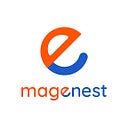10 MAJORITY SHOPIFY SEO PROBLEMS AND HOW TO FIX THEM EFFECTIVELY
Shopify is a leading eCommerce platform that enables businesses to create and manage their online stores. With its user-friendly interface, extensive customization options, and robust features, it has become the go-to platform for businesses looking to set up an online store quickly and easily. However, like any other eCommerce platform, Shopify has its share of SEO problems that can impact a website’s search engine rankings. Some of these problems are more complex than others. That’s why in this article, we will explore some of the common Shopify SEO problems and offer solutions to help you outrank other websites.
Why Is SEO Crucial To Your Online Business?
Before we dive deeper into some SEO problems that Shopify merchants need to encounter in the process of implementing, we need to find out why SEO is so important to online businesses.
Increased Visibility
SEO is the process of optimizing your website to appear higher in search engine results pages (SERPs). When potential customers search for products or services related to your business, they are more likely to find and visit your website if it appears at the top of search results.
Increased visibility not only leads to more traffic to your website but also builds trust and credibility with potential customers. When your website appears at the top of search results, it gives the impression that your business is reputable and trustworthy. This can encourage potential customers to click through to your website and learn more about your products or services.
Improved User Experience
One way that SEO can improve user experience is through the organization and structure of your website. By optimizing your website’s navigation and structure, users can easily find the information they are looking for. This can help reduce bounce rates and increase engagement, leading to a more positive user experience.
In addition, SEO can also improve the speed and performance of your website. Search engines favor websites that load quickly and have a good performance, and users also tend to prefer websites that load quickly and have a smooth performance. By optimizing your website for speed and performance, you can improve the user experience and reduce the likelihood of users leaving your website due to slow loading times.
Sales Conversion
Conversion refers to the percentage of visitors who not only browse your website but also take a desired action, such as making a purchase or filling out a form. A good conversion rate typically falls between 2 to 5 percent. By implementing effective SEO strategies, you can improve your conversion rate even further. This is because SEO involves optimizing your website for relevant keywords, as well as making changes to your site’s design to make it more user-friendly and engaging. By generating leads and increasing your online conversion rate, you can take the first step towards achieving a successful sale through follow-up.
